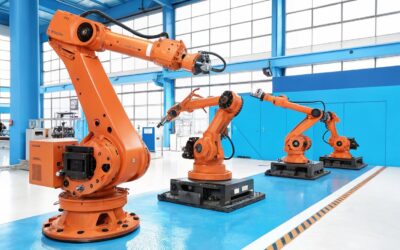Plural ➝ Swarm robots
Noun
- Are a group of robots that are designed to work together as a collective, coordinated unit. They are able to communicate with each other and coordinate their actions in order to achieve a common goal.
Synonyms
Multi-robot systems, Collective robots, Coordinated robots, Swarm Intelligence robots
Antonyms
Individual robots
Etymology
The term “swarm robot” is a combination of “swarm” which is a group of similar organisms or objects that are moving or acting together and “robot” which is a machine capable of carrying out a complex series of actions automatically, especially by being programmed by a computer.
Related terms
Questions
How are swarm robots different from traditional robots?
Swarm robots are different from traditional robots in that they are designed to work together as a collective, coordinated unit, whereas traditional robots typically work independently. Swarm robots communicate with each other and coordinate their actions in order to achieve a common goal, allowing them to perform complex tasks that would be impossible for a single robot.
What are some examples of swarm robots?
Examples of swarm robots include multi-robot systems used in search and rescue operations, agriculture, and environmental monitoring. They also used in logistics, warehouse automation, inspection, and maintenance in industry.
What are some of the advantages and disadvantages of using swarm robots?
The advantages of swarm robots include the ability to perform complex tasks that would be impossible for a single robot, such as mapping and exploring large areas, and the ability to adapt to changing conditions and respond to unexpected situations. However, some of the disadvantages include the complexity of designing and controlling a group of robots and the potential for the system to become unstable if one or more robots fail.



